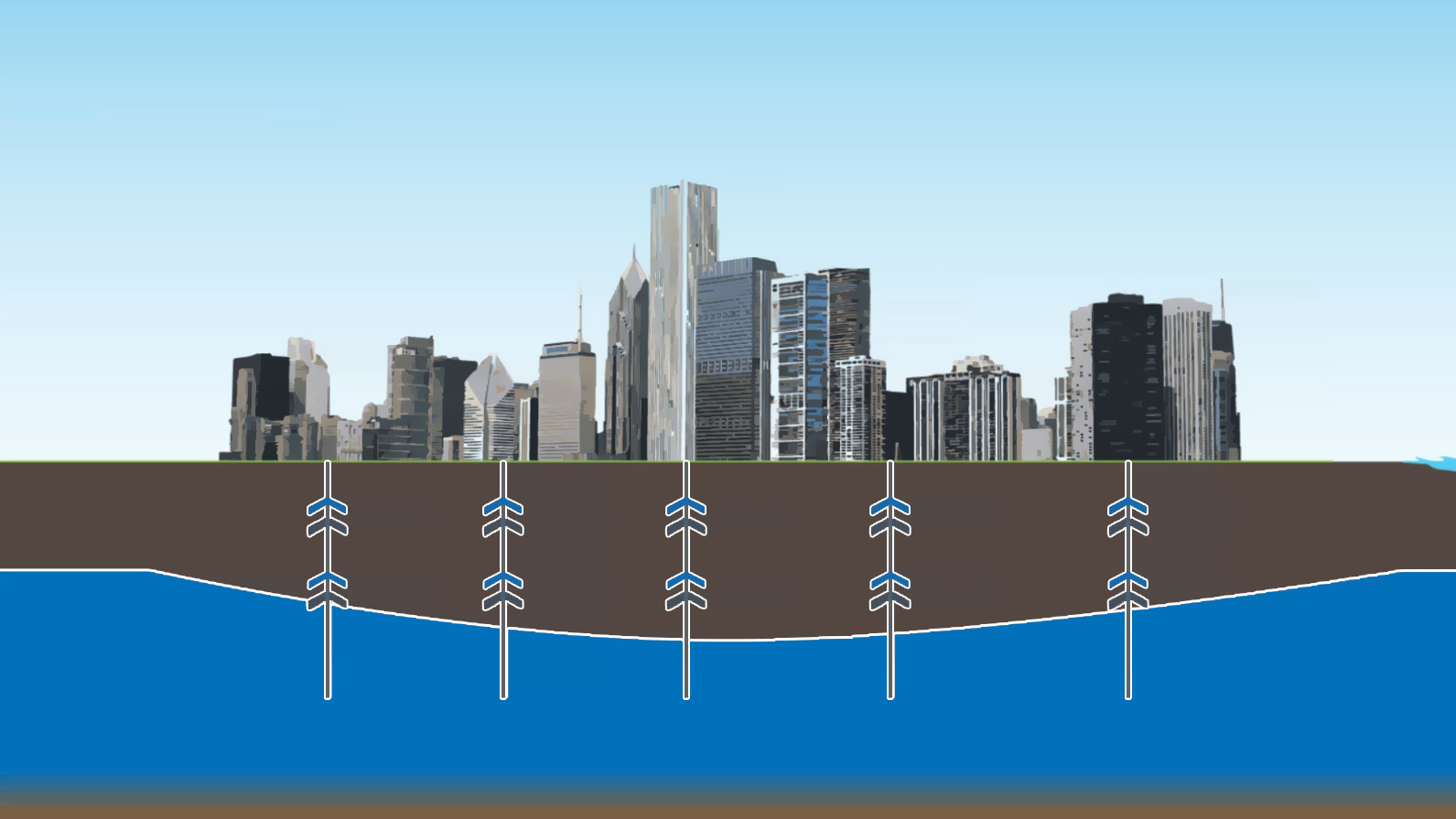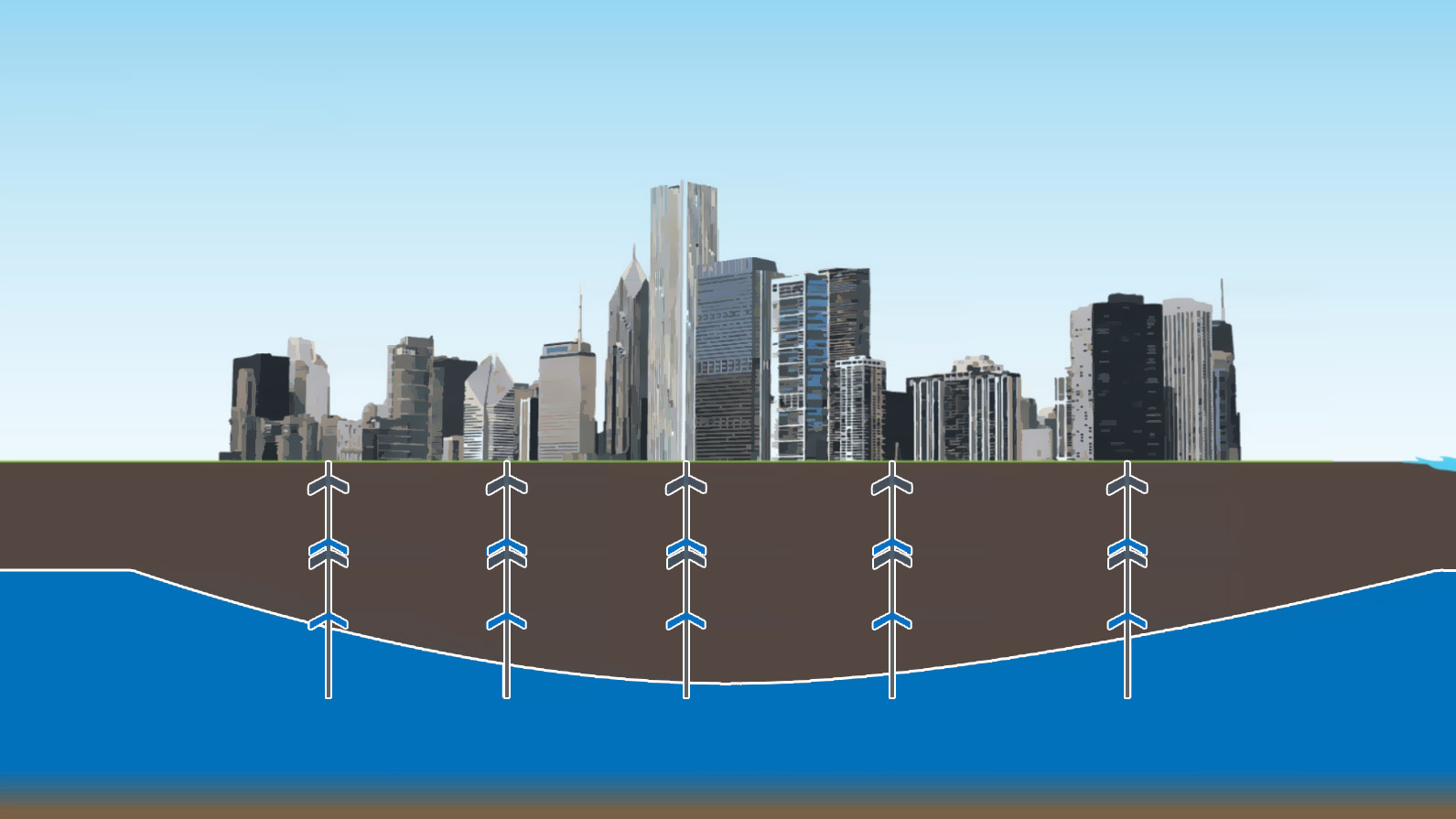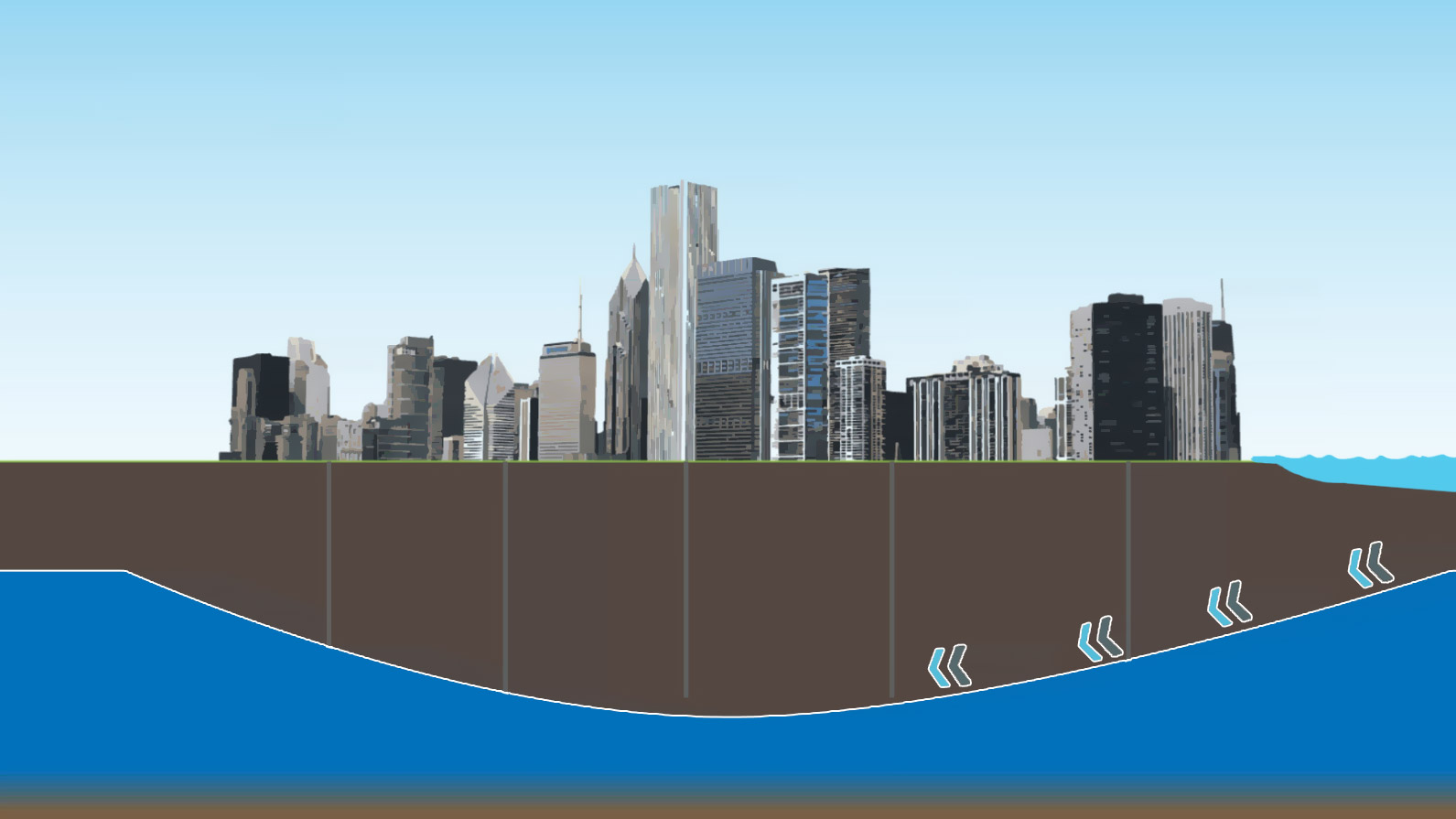Ground Water Management: Challenge…
What usually happens in a densely urbanized situation? Sweet ground water is tapped to be used as drinking water. In a natural situation rain water would restore the ground water level, but in case of densely urbanized land, infiltration of surface water is nearly impossible. Rain water from roofs and paved surfaces is drained out of the city. This prevents the rain water from seeping into the soil, restoring the ground water level.

In dry periods this process even strengthens because the ground water is also used as a source to irrigate the vegetation. As the tapping causes descending of the ground water level, city vegetation will decline because the roots cannot reach the water by themselves anymore. So additional irrigation is needed to keep the city’s green spaces alive. This irrigation is supplied with tapped ground water, which increases the sinking of the ground water level.

If the city is located near the coast, the ground water moreover tends to salinize. Sea water flows into the soil, to fill up the underpressure caused by the pumped out sweet water. This process causes pollution of the ground water, which makes it useless for irrigation purposes. Expensive desalinization measures are needed to make the water drinkable. The growing of any vegetation is only possible with irrigation water brought in from elsewhere.
